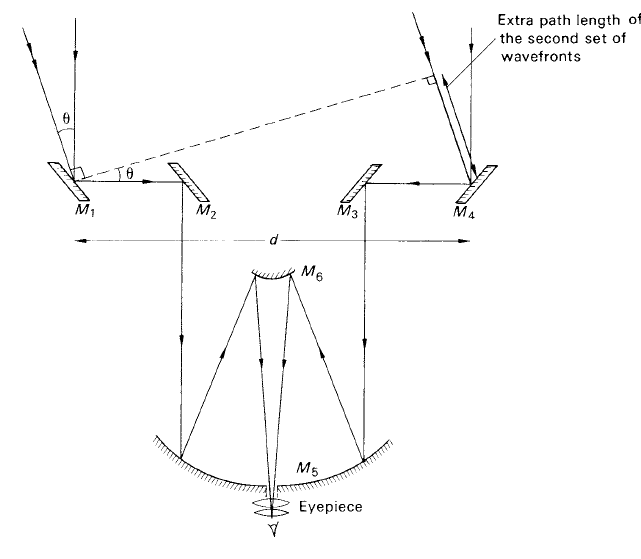
تاريخ الفيزياء

علماء الفيزياء


الفيزياء الكلاسيكية

الميكانيك

الديناميكا الحرارية


الكهربائية والمغناطيسية

الكهربائية

المغناطيسية

الكهرومغناطيسية


علم البصريات

تاريخ علم البصريات

الضوء

مواضيع عامة في علم البصريات

الصوت


الفيزياء الحديثة


النظرية النسبية

النظرية النسبية الخاصة

النظرية النسبية العامة

مواضيع عامة في النظرية النسبية

ميكانيكا الكم

الفيزياء الذرية

الفيزياء الجزيئية


الفيزياء النووية

مواضيع عامة في الفيزياء النووية

النشاط الاشعاعي


فيزياء الحالة الصلبة

الموصلات

أشباه الموصلات

العوازل

مواضيع عامة في الفيزياء الصلبة

فيزياء الجوامد


الليزر

أنواع الليزر

بعض تطبيقات الليزر

مواضيع عامة في الليزر


علم الفلك

تاريخ وعلماء علم الفلك

الثقوب السوداء


المجموعة الشمسية

الشمس

كوكب عطارد

كوكب الزهرة

كوكب الأرض

كوكب المريخ

كوكب المشتري

كوكب زحل

كوكب أورانوس

كوكب نبتون

كوكب بلوتو

القمر

كواكب ومواضيع اخرى

مواضيع عامة في علم الفلك

النجوم

البلازما

الألكترونيات

خواص المادة


الطاقة البديلة

الطاقة الشمسية

مواضيع عامة في الطاقة البديلة

المد والجزر

فيزياء الجسيمات


الفيزياء والعلوم الأخرى

الفيزياء الكيميائية

الفيزياء الرياضية

الفيزياء الحيوية

الفيزياء العامة


مواضيع عامة في الفيزياء

تجارب فيزيائية

مصطلحات وتعاريف فيزيائية

وحدات القياس الفيزيائية

طرائف الفيزياء

مواضيع اخرى
Measurements at high angular resolution: Michelson’s stellar interferometer
المؤلف:
A. Roy, D. Clarke
المصدر:
Astronomy - Principles and Practice 4th ed
الجزء والصفحة:
p 334
28-8-2020
2892
Measurements at high angular resolution: Michelson’s stellar interferometer
The distances of stars are so great in relation to their diameters that, even with the world’s largest telescopes, it is extremely difficult to make measurements of their apparent diameters from conventional imaging. By extending an interferometric method which he had developed for measuring the diameters of such objects as Jupiter’s satellites, Michelson in the 1920s provided the first direct measurements of the diameters of a few stars. His interferometer was never in general use but it is worthwhile describing it here, as it represents a milestone in providing us with the basic knowledge of the sizes of stars.
Michelson’s original interferometer consisted of two collecting apertures which were fixed to a beam so that their separation could be adjusted. The length of the beam was 6 m. A very stable platform was provided for the beam by attaching it to the 100-in (2·54 m) Mt Wilson telescope. The essential elements of the optical system are depicted in figure 1. Its principle is similar to that of Young’s classical double-slit experiment.
Suppose that the interferometer is in exact adjustment so that the distances M1, M2, M5, M6, eye and M4, M3, M5, M6, eye provide the same optical path length. The wavefronts arriving perpendicularly to the system are intercepted by the two apertures M1 and M4 and the interference pattern set up from the two rays can be viewed in the eyepiece. For the second series of wavefronts arriving at an angle θ to the first set, a second interference pattern is set up but, in general, this is slightly displaced so that it does not overlap the first. For the second set of wavefronts, the ray leaving
M4 lags in phase behind that from M1 as it has had to travel an extra distance given by d sin θ, where d is the separation of the mirrors. If the value of d sin θ is equal to λ/2, then a bright fringe from the pattern set up by the second set of wavefronts will fall exactly on a dark fringe which was produced

Figure 1. The Michelson stellar interferometer. Mirrors M1 and M4 collect the light from the star and act in the same way as the slits in Young’s classical interference experiment. Wavefronts are drawn corresponding to those arriving from points separated by an angle θ.
from the first set of wavefronts. The overall effect at this condition is that the two fringe patterns are cancelled out by each other. Thus, for two point sources separated by an angle θ, a separation of the mirrors M1 and M4 can be found so that no interference pattern is present and, at this condition,

Hence,
 (1)
(1)
When the object being investigated is a single star, the interference from each point within the optical disc needs to be considered. Mathematical procedures which are similar to those needed to evaluate the diffraction pattern produced by a circular aperture are required to determine the condition when the interference pattern is destroyed. For a circular object of uniform brightness, the interference pattern should not be detectable when
 (2)
(2)
where θ now corresponds to the angular diameter of the star. If the star is known not to be uniformly bright, allowances can be made which alter the numerical factor contained in equation (2).
The original Michelson interferometer was only able to investigate a few nearby supergiant stars. One of its limitations was that the interference fringes had to be assessed by eye. The experiment requires the separation of the mirrors to be adjustable but, for the white light fringe condition, the difference in path length for the two beams needs to be maintained to the order of one wavelength of light—a difficult mechanical problem at the time. With the application of modern equipment such as lasers to monitor the mirror separation and TV cameras to record fringe patterns, there has been a resurgence of interest in the principle of Michelson interferometry by several research groups around the world.
 الاكثر قراءة في مواضيع عامة في علم الفلك
الاكثر قراءة في مواضيع عامة في علم الفلك
 اخر الاخبار
اخر الاخبار
اخبار العتبة العباسية المقدسة

الآخبار الصحية















 قسم الشؤون الفكرية يصدر كتاباً يوثق تاريخ السدانة في العتبة العباسية المقدسة
قسم الشؤون الفكرية يصدر كتاباً يوثق تاريخ السدانة في العتبة العباسية المقدسة "المهمة".. إصدار قصصي يوثّق القصص الفائزة في مسابقة فتوى الدفاع المقدسة للقصة القصيرة
"المهمة".. إصدار قصصي يوثّق القصص الفائزة في مسابقة فتوى الدفاع المقدسة للقصة القصيرة (نوافذ).. إصدار أدبي يوثق القصص الفائزة في مسابقة الإمام العسكري (عليه السلام)
(نوافذ).. إصدار أدبي يوثق القصص الفائزة في مسابقة الإمام العسكري (عليه السلام)


















